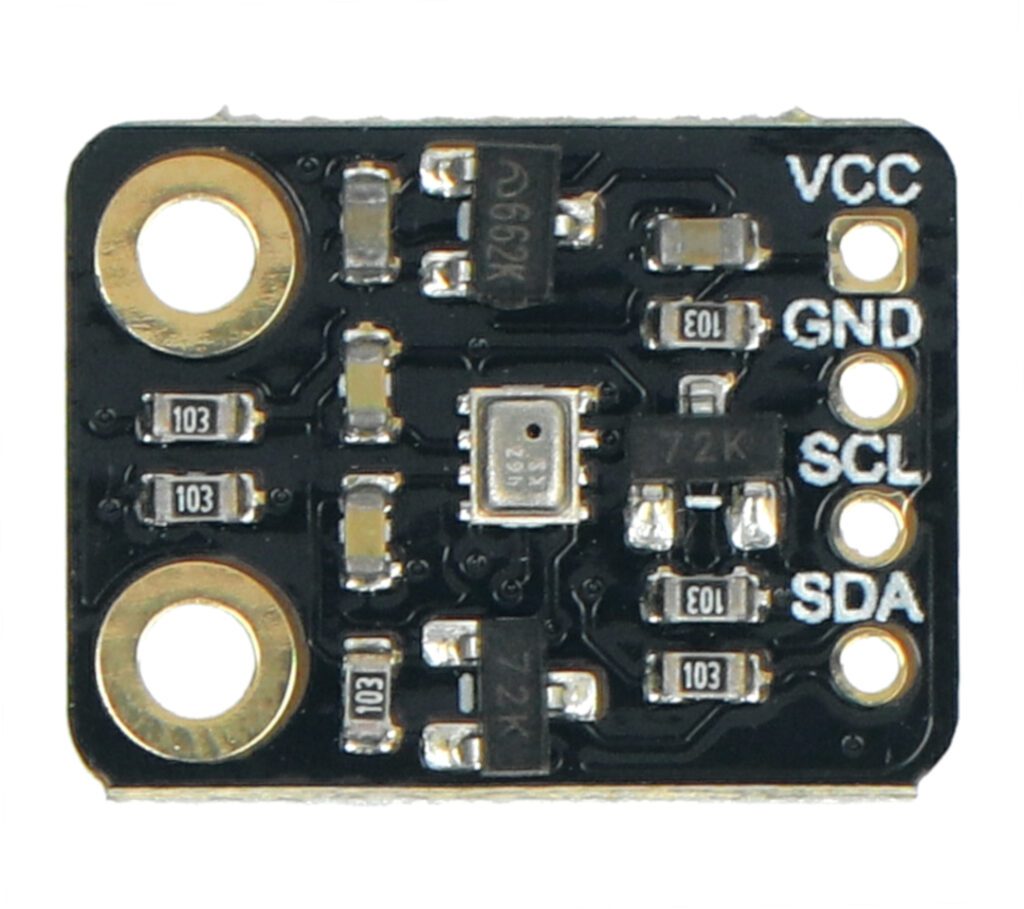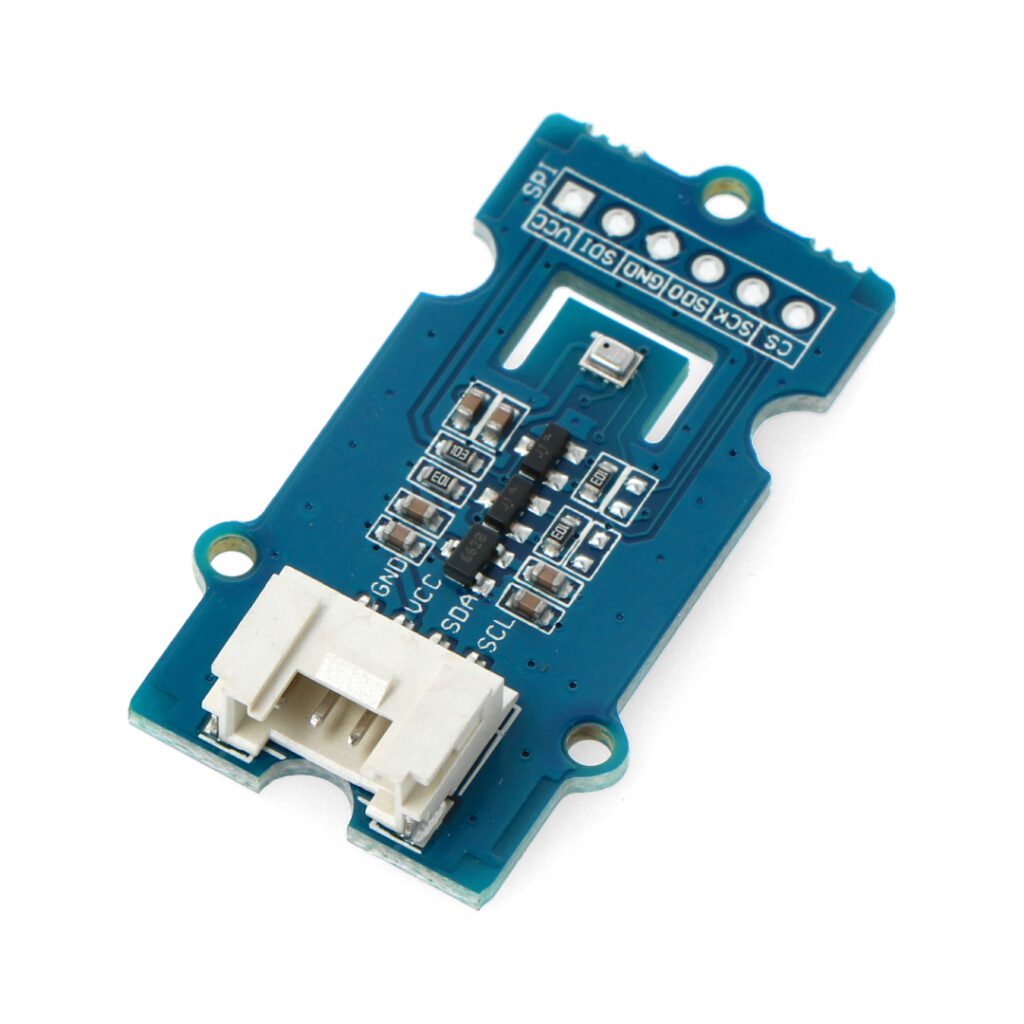Table of Contents:
Atmospheric pressure sensors are designed to measure the total pressure of the air that surrounds the device.
Pressure is a key environmental parameter and changes depending on the current weather conditions and the altitude at which the measuring point is located relative to sea level.
Sensors allow not only to precisely track changes in this parameter, but also to interpret them, which translates into the ability to forecast the weather.
The Arduino pressure sensor takes into account the effect of altitude on pressure, which is important for precise meteorological measurements.
What is the Arduino pressure sensor used for?
Pressure sensors are widely used not only in meteorology, but also in many other fields requiring accurate monitoring of this parameter.
They are an indispensable component in aeronautical navigation systems, as precise pressure measurements are crucial for flight safety.
In addition, they are used in research projects, building automation systems and in everyday devices such as smartphones and GPS devices, where they are used to determine altitude above sea level.
The sensor is the most important component of any pressure monitoring system.
It is the one that provides accurate and reliable measurements, which at the same time translates into the efficiency of the entire system.
High precision guarantees effective weather forecasting, in addition to optimizing many technological and research processes in which it is important to know atmospheric pressure.
What distinguishes modern atmospheric pressure sensors?
In meteorology, measuring atmospheric pressure is as important as monitoring wind speed, rainfall intensity, air density, or temperature.
However, in order to accurately determine weather conditions, it is necessary to use appropriate diagnostic tools.
Modern versions, such as the Arduino pressure sensor, offer accurate measurements of atmospheric pressure over a wide range.
They are equipped with advanced piezoelectric transducers.
Thanks to them, it is possible to measure height with an accuracy of 0.1 m.
Communication with microcontrollers, such as the Arduino, is via the I2C or SPI bus, making it easy to integrate the sensors into embedded systems.
Users can also take advantage of libraries that make these devices easier to use.
Application of Arduino pressure sensor
Pressure sensors compatible with platforms such as Arduino offer entirely new possibilities.
They can be used not only in weather stations, but also in drones and even other remotely controlled aircraft models.
For example, the Adafruit BMP388 sensor module, which is compatible with Arduino, in addition to measuring pressure, can also measure temperature with an accuracy of ±0.5°C.
Using the appropriate source code, the sensor’s functionality can be extended to include differential pressure measurements.
How are such devices used?
Digital pressure sensors make it possible to build advanced home weather stations that accurately monitor weather conditions.
In the case of drones and aircraft, pressure sensors are used to determine flight altitude and to stabilize it in changing weather conditions.
In addition, the ability to monitor pressure can be useful in home automation systems, such as for controlling ventilation, depending on changes in pressure.
It is also worth mentioning that the described sensors are also used in automotive applications, where they are used to monitor tire pressure.
This information is then sent to the on-board computer and displayed on the dashboard.
Thanks to them, it is possible to maintain the optimal pressure, thereby increasing driving safety.
It should be remembered that too low a tire pressure makes the vehicle move less stably, especially when cornering.
Digital barometer BMP280 - a way to measure atmospheric pressure with precision
The BMP280 digital barometer is an advanced tool for measuring atmospheric pressure, offering a measurement range of 300 to 1100 hPa with an accuracy of 1 hPa.
The Grove-branded product is Arduino-compatible and stands out for its small size.
The device is powered by 3.3 V, so it is suitable for use with microcontrollers operating at similar voltage levels, such as STM32Discovery, Arduino Pro Mini 3.3 V, or Raspberry Pi minicomputer . To connect the module to chips operating on 5 V, such as the Arduino Uno, it is necessary to use a voltage converter.
The BMP280 module communicates via the I2C or SPI bus and has 6 leads, allowing easy connection to various microcontroller platforms. This Arduino pressure sensor is widely used in electronic projects. It can be used for weather forecasting, determining the flight altitude of drones, as well as calculating the altitude above sea level based on changes in atmospheric pressure, which is useful in GPS navigation systems.
The module is distinguished by its compact size, making it easy to integrate into various devices. Besides, it offers a wide measurement range and allows temperature measurement, which is an additional advantage when creating advanced environmental monitoring systems. It is not only a tool for measuring basic parameters, but also a key component in advanced electronic projects. Users can count on easy integration and versatile and precise performance.
How useful was this post?
Click on a star to rate it!
Average rating 5 / 5. Vote count: 1
No votes so far! Be the first to rate this post.





















